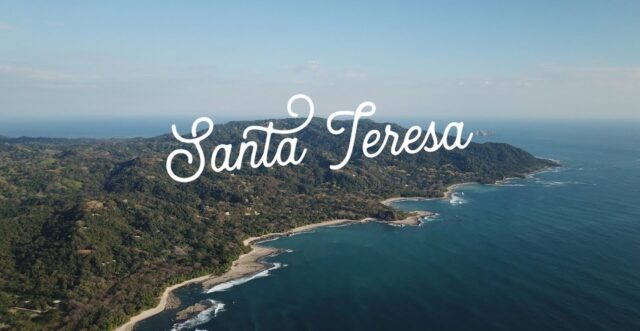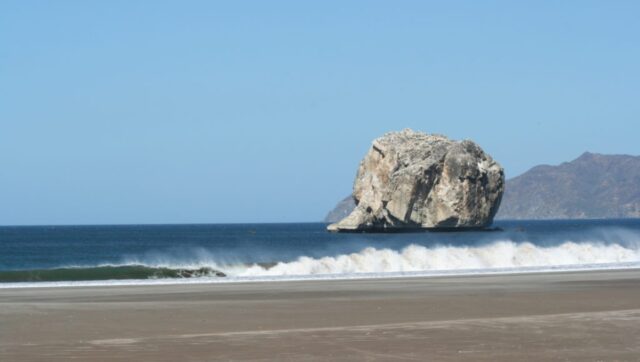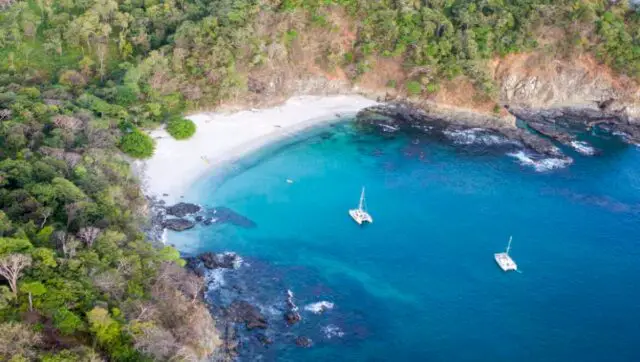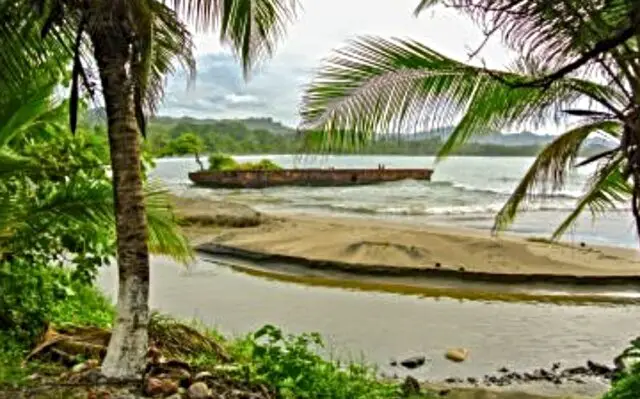You don’t have to be a beach lover to fall in love with Costa Rica, but considering that Costa Rica has nearly 300 beaches along its coastline, it certainly helps. People from all over the world come during the dry season (November to April) to visit and enjoy the surf, nature, and sun of this tropical Central American country. So, do you know where to nail the umbrella? Here we leave you a list of the best beaches in Costa Rica, those that you cannot miss.
Santa Teresa Beach, Puntarenas

Despite the increase in tourism that the Nicoya Peninsula has suffered lately, Santa Teresa beach continues to have that rural and simple character. Here you can still find the “Ticos” (as they affectionately call the natives of Costa Rica) casting the trawl on the beach and making some coals where they roast the catch of the day and sell it to hungry tourists.
The constant wind from this beach makes Santa Teresa one of the best places in Central America for surfing. And if the waves are too rough for you, we suggest another “wild” activity. Feel like Tarzan and walk through the jungle that surrounds the beach, going from vine to vine.
How to get there: the fastest option is to take the ferry to Santa Teresa that leaves from Paquera. The journey takes about an hour and goes around the southern tip of the Nicoya Peninsula. If you prefer, you can buy an internal flight from the Juan Santa María airport (close to San José) to the Tambor airport, located about 25 minutes by taxi or bus from Santa Teresa.
Naranjo Beach, Guanacaste

Located in the northwest of the province of Guanacaste, near the city of Liberia, this hidden beach is the ideal place if you want to escape the madding crowd and reconnect with Mother Earth.
And just behind the beach, the attractive Santa Rosa National Park awaits you. Created in 1791, it is the oldest protected natural area in the country. Here you can discover this unique ecosystem of northern Costa Rica and also the abundant tropical flora, birds, and sloths that inhabit this park.
And there are still more! As there are no hotels in these parts, if you want to come and discover all these wonders, you will have to pitch your tent in one of the superbly equipped camping areas that the park has.
Getting there: Transportation options available to Playa Naranjo include bus, taxi, and ferry. One of the most used methods by visitors is to travel by ferry from Puntarenas. The Coonatramar ferry makes four daily trips between Puntarenas and Playa Naranjo and can accommodate both passengers and vehicles. the journey takes an hour and a half. If you travel by car, it is recommended to go to the pier at least one hour in advance during busy times and on weekends.
Manuel Antonio Beach, Puntarenas
One of the smallest, but at the same time most beautiful, protected areas in Costa Rica, which not only has one beach but four: Espadilla Sur, Manuel Antonio, Escondido, and Playita.
The park is located just a few hours from the San José airport and is one of the most important tourist areas. Visits to the park are limited: only 600 people can enter on weekdays and 800 on holidays. Thanks to this, wildlife, including iguanas, sloths, and the endangered squirrel monkeys, can live in relative isolation. In addition, the beaches do not have to suffer from the hordes of bathers.
One more tip: at night, take the 7-kilometer quad tour along the north coast and visit the bustling town of Quepos, where you will find the best beach bars and restaurants in Costa Rica.
How to get to the best beaches in Costa Rica: The national park is located just 7 km from Quepos, about 70 km from Jacó, and 140 km from San José, the capital. From San José International Airport, you can get there by public or shuttle bus and the journey takes four hours.
Another option would be to fly from San José to Quepos (one hour flight) and from there get to the park by car or bus. The roads are generally good, although the one from Quepos to the park is quite narrow and curvy.
Avellana Beach, Guanacaste
The important thing about this beach is not the six-meter waves, but the legend of 400-kilo pork named Lola. The important thing about this beach is not the six-meter waves, but the legend of a 400-kilo sow called Lola.
This little pig was once the star of this beautiful beach in Guanacaste, and you can find her resting next to Lola’s beach bar, strolling through the surf school, or bathing in the crystal clear waters of Avellana beach.
Although the real Lola has already died, now there is always a piggy queen who replaces her and gives an eccentric touch to Avellana beach, but yes, the little animal helps create a fun and very touching environment on the beaches of Costa Rica.
In short, it is the beach with the friendliest people in Costa Rica. Join the surfers, the foreigners who have ended up living here, and the tourists who are passing through and looking for the sun, which always shines in this area of Costa Dorada.
How to get there: There are several options to get to Playa Avellana, depending on your starting point. If you go from San José, the most recommended option is to travel by bus to Tamarindo and from there make the last trip by taxi. If your Costa Rica itinerary includes Villareal, you can reach Avellana Beach by car in about two and a half hours.
Santa Catalina Islands

Just a 30-minute boat ride from Flamingo, the 20 islands that make up the Santa Catalina Islands archipelago is more than just pretty beaches. The gentle waves that wash the rugged shores of the islands are ideal for diving. People come here to dive in and discover what the crystal blue waters of the ocean hide.
In this marine fauna of the best beaches in Costa Rica that inhabits the coral reef, you can find everything: barracudas, colorful fish, huge giant rays, and tiger sharks. And if you return to the surface, in the Santa Catalina Islands you can enjoy pristine sandy beaches and stone beaches ideal for hiking. And don’t miss the hundreds of sea turtles that come to these shores to lay their eggs.
How to get there: the Santa Catalina Islands are located north of the tourist cities of the province of Guanacaste. The best way to get to them is from Tamarindo, Flamingo, Conchal, or Papagayo, with special emphasis on Flamingo, from where there are frequent boat trips.
Puerto Viejo, Limon

Where can you relax on the beach in the morning, visit a chocolate plantation at noon, explore wildlife in the afternoon, go horseback riding as the sun sets, and go clubbing in flip-flops at night? ? You can only do all of this in one place: in Puerto Viejo.
In the eastern part of Costa Rica, it rains much more, which is why the vegetation is very lush. You can see for yourself in the Cahuita and Manzanillo National Parks that border the coastline.
Of course, the beaches are white sand and warm waters, and the waves, six meters, are perfect for surfing, but the best thing about Puerto Viejo is its people. The inhabitants are Afro-Caribbean, Indians, Ticos, and the indigenous Bribri. They all live in harmony and share the love for this land that is their home.
How to get there: Your trip to Costa Rica and its beaches will most likely start in San José, and from here you can reach Puerto Viejo by road in about four hours. The road has good asphalt and crosses green mountain landscapes. Once you get to the city of Limón, take the road south and parallel to the coast until you reach Puerto Viejo.
To get around Puerto Viejo one of the best options is to rent a bicycle, although you may want to consider renting a car if you stay in the outskirts or have more flexibility to move around the area. You also have at your disposal buses to and from several cities in the country, such as Manzanillo (an hour and a half journey) or San José (five hours journey), which leave from the stop located on the main road in the center of Puerto Viejo.
Practical information: when to travel to Costa Rica
Costa Rica has a tropical climate, with a rainy season and a dry season. Unless you plan to spend the day surfing, it is best to visit the country during the dry season, which runs from December to April. The average temperatures that you will find vary from about 17 degrees in the interior and about 30 on the coast, so do not worry about the weather, because it is ideal for a beach vacation during those months.
Keep in mind that the dry season is the high season when it comes to tourism, so you should book your accommodation well in advance to guarantee the best prices and be able to visit the best beaches in Costa Rica. Some accommodations require a minimum stay of several nights.
Other plans in Costa Rica
Spending a few days (or a couple of weeks) relaxing on paradisiacal beaches is more than enough reason to travel to Costa Rica, although there are so many things to see and do in the country, that it never hurts to have a list of recommendations at hand. and suggestions, don’t you think?
Whether it is knowing the diversity of flora and fauna of the Corcovado National Park, seeing the nesting of sea turtles, visiting historic cities such as Heredia and Las Juntas, or jumping on a zip line, surely in our article on what to see in Costa Rica to enjoy its pure life you will find a plan that suits your tastes and needs.

For those who have experienced shifts in consciousness and know that more peace, joy, and love awaits in a better living environment. A bold shared vision. A living community and hub for innovation. A sustainable ecosystem for living and working. A model for the new future.
